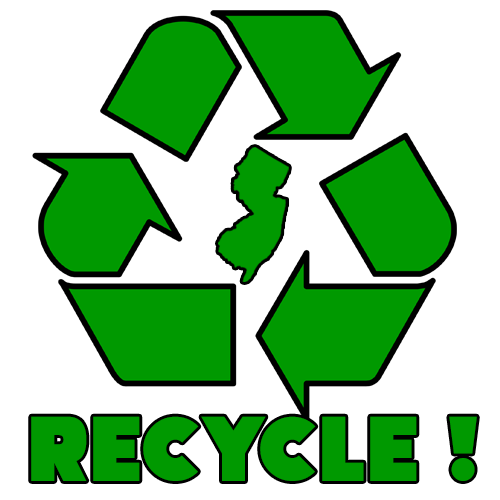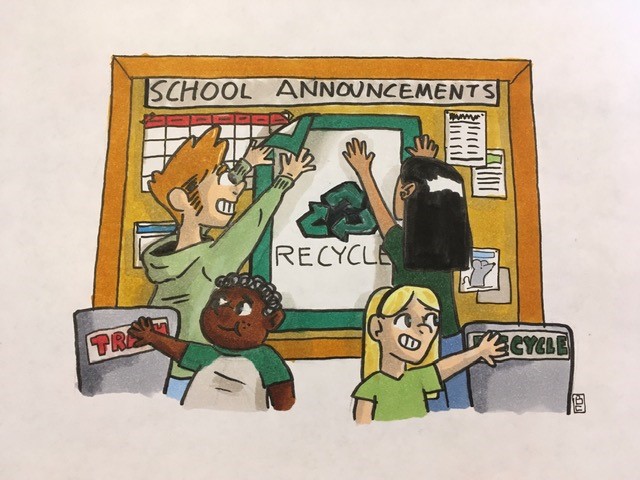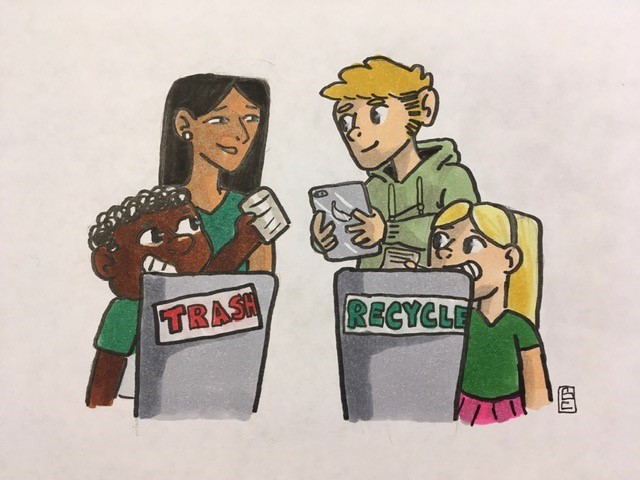The New Jersey Recycling Toolkit for Schools
“It is our collective and individual responsibility…to preserve and tend to the world in which we live.,” –Dali Lama
The New Jersey Recycling Toolkit for Schools is dedicated to the memory of Ron Hutchinson, a president of the Association of New Jersey Recyclers (ANJR), who was extremely devoted to proper recycling in schools, and to the memory of Janet Pellichero, a member of the ANJR Board of Directors, who was infused with passion and energy related to recycling and was an enthusiastic supporter of the recycling food waste.
So, you need to develop a recycling program for your school?
Hopefully, you’re reading this because you WANT your school to recycle successfully. You understand its importance environmentally. You make sure to recycle in your home. It probably makes you feel good to do so. Just in case you forgot or maybe didn’t know about the benefits of recycling, click here to learn why it’s important to do so.
Introduction
This toolkit provides tools and guidance necessary for designing, implementing, or expanding a viable and comprehensive recycling program in New Jersey schools and is intended for grades K-12. It is presented generally in the chronological order that those responsible for implementing or upgrading a school recycling program would follow.
Resources
A guide to New Jersey state recycling resources.
The toolkit is divided into the following eight phases:
Phase One:
Gain Support
A successful recycling program at your school needs support from all of the key decision-makers.
Phase Two:
Build a Team
Your Recycling Team should consist of a small group of people who will collect data, provide input, design and implement the recycling program, as well as teach students and staff how the new system works.
Phase Three:
Gather Information
There are a number of sources to consult when determining which materials are acceptable in your school’s recycling program and how to prepare them properly.
Phase Four:
Design
It’s finally time to design your recycling program! Be sure you are consulting with the buildings and grounds supervisor and staff throughout this phase. Their input is critical while designing your program.
Phase Five:
Implement
Finalize your order for the container purchase. Kick off your program and educate
Phase Six:
Build a Team, Track, Adjust, and Sustain
When you design your recycling program, make sure you have a plan to track your progress. Measure how the total trash and recycling volumes/weights are changing. Make observations about contamination and problematic areas.
Phase Seven:
Celebrate Success!
When you’ve reached your goal — such as doubling your recycling rate or reducing your total trash by 20% — celebrate!
Phase Eight:
Enhance
Now that you’ve established a comprehensive recycling program targeting the mandated recyclable materials and your school is in compliance with local recycling requirements, you can consider expanding to include other materials that are not mandated.



